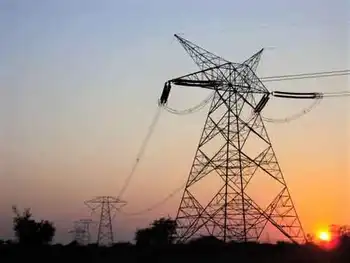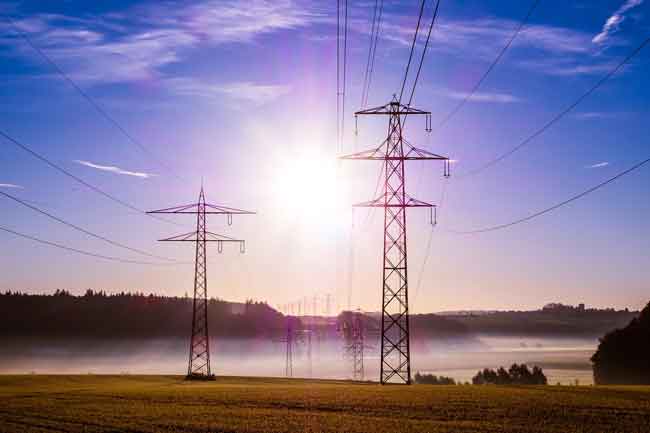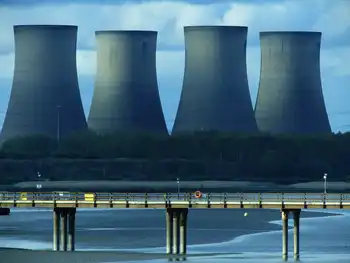Smart infrastructure at core of NV Energy spending
By Industrial Info Resources
Substation Relay Protection Training
Our customized live online or in‑person group training can be delivered to your staff at your location.

- Live Online
- 12 hours Instructor-led
- Group Training Available
In a keynote address to about 1,000 attendees at the Power-Gen International convention, Michael Yackira, president and chief executive of NV Energy, declared, "The era of cheap energy is over. We're focusing on offering our customers predictable prices, rather than low prices. And we're seeking to transform our relations with customers by using advanced metering technology to give customers a more active role in their energy decision-making."
NV Energy recently won a $138 million grant from the U.S. Department of Energy to install "smart" meters throughout the company's Nevada service area. Yackira estimates that NV Energy will spend a total of about $300 million on the smart grid project.
"As long as I am CEO, we will not be building any new coal-fired generation," Yackira said in an interview with Industrial Info. "The risks and uncertainties are simply too large. We've been part of an industry effort that's been pushing for climate change legislation for three years. We need a better roadmap on carbon limits. Congress needs to act to enact climate-change legislation."
The U.S. Environmental Protection Agency (EPA) said it was moving forward to regulate carbon-dioxide emissions because, in its view, those emissions endanger human health and as such can be regulated under the terms of the Clean Air Act. The decision, while not unexpected, has drawn withering criticism from utilities and other industrial concerns.
Nevada regulators have done their part to provide incentives for NV Energy to "green" its resource portfolio, offering the utility a very large incentive — up to 500 basis points (5 percentage points) in additional return on equity (ROE) for its investments in renewables and efficiency. The typical utility ROE is about 10%, so Nevada regulators are offering NV Energy and its shareholders a hefty premium to invest in renewable energy and efficiency.
NV Energy has followed the money, increasing annual spending on efficiency and renewables from about $2 million in 2001 to $45 million in 2007 and $60 million in 2009, Yackira told the Power-Gen audience. Power-Gen officials estimate attendance at this year's convention to be 21,000, a significant increase over the estimated 18,000 that attended last year's convention. About 1,300 companies exhibited at the event.
NV Energy serves Las Vegas, which for the past two decades has been one of the fastest-growing cities in the U.S, which has made NV Energy, formerly known as Sierra Pacific Resources, one of the nation's fastest-growing utilities.
Normally, robust customer growth is good news for utilities and the companies that provide services to them. But for most of the last 20 years, Nevada regulators and executives at the utility agreed that the utility should meet a significant portion of its electric demand by purchasing power from other utilities in the West. That strategy worked as long as the West was awash with excess generating capacity, which kept wholesale electric prices low. But during the Western power crises of 2000-01, the strategy nearly bankrupted NV Energy, which was unable to recover nearly half a billion dollars in out-of-pocket costs for purchased power.
"Back then, only about 35% of the power we supplied came from units we owned," Yackira said. But now, after four years of heavy capital spending on electric generation, about 75% of the electricity NV Energy delivers comes from power plants it owns.
Earlier this year, the Las Vegas-based utility postponed a planned coal-fired generator, scheduled to be built in Ely, Nevada. However, it is moving ahead with a planned 250-mile transmission line, called the One Nevada Transmission Project, which will connect its northern and southern Nevada service areas. Yackira is excited about the planned line because it will allow NV Energy to take further advantage of the significant geothermal energy resources that exist in its northern Nevada service area. Those resources far outstrip the electric demand in that part of the state, but to date, the geothermal resources could not be developed because there was no transmission link between northern and southern Nevada. Yackira is optimistic that this will soon change.
NV Energy has had a robust capital-spending program in recent years, spending in excess of $1 billion annually for the last four years, mainly on electric generation. Capital spending is now tapering off and will be about $800 million this year and $700 million next year, Yackira told the Power-Gen convention.
Significant investments in renewable energy — both utility-scale and on individual homes and small businesses — has been an important part of NV Energy's strategy, Yackira said. The utility has about 1,000 MW of renewable energy projects in development or under contract: "We believe in putting our money where our mouth is."











